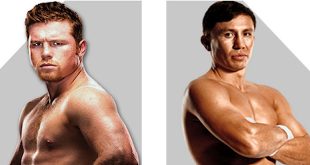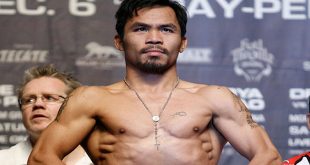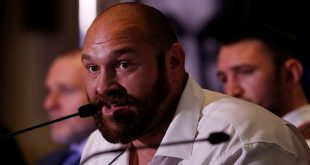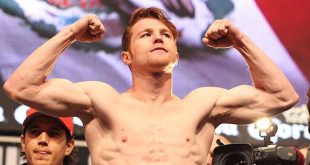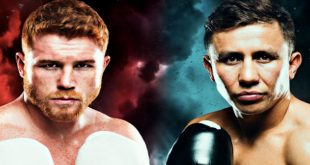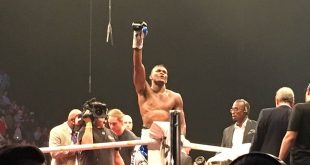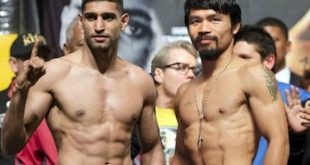Last time out, I explained to you the beginnings of the period that brought us the heavyweights, known as the lost generation. I spoke to you about Leroy Jones, Tony Tubbs and Greg Page. This time I bring to you the careers of Michael Dokes, Tony Tucker and Pinklon Thomas. “Dynamite’ Michael Dokes began his career in 1976, defeating one Al Byrd in two rounds, slowly he built an eleven fight unbeaten record, before defeating (WU10) in March 1979, Wendall Bailey, who at the time had a 13-0 resume. Dokes followed this up in September 1979, by winning another ten-round decision over world ranked Jimmy Young. As the eighties began, Dokes at 13-0 was a hot prospect on the fringes of world class, and he beat future European Champion Lucien Rodriguez to solidify his ranking in February 1980. Dokes then had his first blip, drawing in April of 1980 with then heavyweight contender and future cruiserweight titlist Ossie Ocasio, but in their June 1980 rematch, Dokes redeemed himself, flattening the Puerto Rican in a round! In 1981, Dokes continued to gain experience beating the likes of Randall “Tex’ Cobb and Brit John L Gardner. In January 1982 Dokes won the NABF title in a round against Lynn Ball, before after one more successful defense of his North American title, Dokes got his world title shot against Mike Weaver in December 1982.
Dokes won on a very controversial one round stoppage that led to a rematch in May 1983, in which in a very dull drawn out affair, Dokes escaped with a fifteen-round draw to retain his title. Dokes’s life was starting to suffer the effects of drug addiction, but in September 1983, Dokes somewhat controversially fought white South African Gerrie Coetzee, in his home state of Ohio. In a huge upset, Coetzee KO’d the unbeaten Dokes at the end of the tenth round. Dokes’s life was being consumed with a drug addiction that meant he did not fight from March 1985, until December 1987. In December 1987, Dokes began a comeback, which gained momentum in 1988, and led to a March 1989 clash with the then unbeaten top class heavyweight contender Evander Holyfield. Holyfield was eyeing up a shot with Heavyweight champion Mike Tyson, and although unbeaten for five and a half years, Michael Dokes, was not considered a threat, rather a washed up former champion.
But Dokes would produce the finest performance of his career, to give Holyfield sheer hell for ten rounds before Evander finally broke down the streaking “Dynamite’ Dokes. Although he had lost, Dokes was considered a legitimate contender once more, but as is the way, with the lost generation of heavyweights, he failed to build on the momentum of the Holyfield fight, losing control of his weight and struggling to beat mediocre journeymen. Dokes met Canadian bomber Razor Ruddock in April 1990, but after three uneventful rounds, Ruddock unleashed three of his devastating “smashes’ (a hybrid hook/uppercut), and pole axed Dokes into the ropes and onto the deck. Dokes recovered to put a nine fight winning streak together and gain a shot in February 1993 with new unbeaten heavyweight champion of the world Riddick Bowe, but in Madison Square Garden in Dokes’ last big fight, he embarrassed himself and was blown away by “Big Daddy’ in two minutes. Dokes continued to fight, but after losing in a couple of rounds to Ray Phillips in October 1997, Dokes finally hung his gloves up.
“Pinky’ Pinklon Thomas began his pro journey in August 1978. And after building up a nineteen-fight unbeaten record; Thomas met the then once beaten James Tillis in August 1982. And in a very impressive display beat “Quick’ Tillis in eight. Thomas followed this up in January 1983 with a draw against future WBA champion Gerrie Coetzee. Thomas continued his winning ways, beating amongst others future cruiserweight titlist Alfonzo Ratcliff. All this would lead to an August 1984 clash with WBC titlist “Terrible’ Tim Witherspoon. Many people werehailing Witherspoon as the future of the division, but Thomas put together his finest performance to outpoint Witherspoon and win the title. But again, as is the way with the lost generation of fighters, drug abuse started to affect Thomas’ career. Although Thomas beat Mike Weaver in a June 1985 defense (KO8), he would soon drop the belt in March 1986 to Trevor Berbick, by way of decision. Thomas’s drug addiction had cost him his belt, and it would take him another six to seven months to sort his life out enough to comeback. Three unimpressive victories over journeymen led Thomas to get a date with then WBA/WBC titlist Mike Tyson in May 1987. Tyson all but finished Thomas in the first two rounds, but seemed to take it easy on him, before a devastating flurry of punches battered Thomas to the floor in the sixth.
Thomas drug problems would comeback to haunt him, and he would not be seen in the ring for another eighteen months. In December 1988, Thomas, sporting a baldhead, came back to fight the unbeaten Evander Holyfield (19-0), who with this fight was having his second match at heavyweight. Thomas was never in the fight, but he took his licks before the corner retired him at the end of the seventh. Thomas would continue his career, he dropped a ten round decision to Mike “The Bounty’ Hunter (a late eighties/early nineties version of Chris Byrd), took the prospect Riddick Bowe eight rounds in September 1990, before in his next fight (February 1991) he was steamrolled in a round by Tommy “The Duke’ Morrison. Thomas would comeback in mid 1992 to string together a load of KO’s against a bunch of nobodies that lead to a decision win over the massive Craig Payne in November 1992, before in his final fight in January 1993 Thomas lost to Poncho Carter in seven.
In November1980, Tony Tucker began his career by KO’ing the infamous (for Frank Bruno Fans) Chuck Gardner in three rounds. Tucker built up a perfect sixteen-fight record, before in August 1982, a freak accident with his opponent Danny Sutton, in the third round of their bout, led to Tucker being put on the shelf for fifteen-months. Both fighters had banged their knees together in a clinch in the third round of the bout, and neither was able to continue, so the fight went down as a no contest. Tucker came back in November 1983, and the following September a 25-0 Tucker beat his first name, former heavyweight contender Jimmy Young by ten-round decision. Tucker’s career development was really going slowly, but finally in September 1986, Tucker beat contender James Broad to win the United States title and to gain the number one ranking for the IBF title. Tucker, due to politics, did not fight again until May 1987, but on the under-card of Tyson/Thomas, Tucker met number-two contender James “Buster’ Douglas for the IBF title vacated by Michael Spinks.
Douglas had the better of the fight, and was leading going into the tenth, but midway though the round, Tucker trapped Douglas along the ropes and Douglas gave up, leaving referee Mills Lane no alternative but to stop the fight in Tucker’s favor. Victory over Douglas meant Tucker would, along with Mike Tyson, fight to win and unify all three-alphabet titles (WBA, WBC, IBF). So in August 1987, the two undefeated heavyweights clashed. Tucker had a good first round staggering Tyson with a big right hand, but unfortunately, Tucker broke his right hand during the round, and although he gave the unbeaten Tyson by far his toughest fight yet, Tyson quite rightly gained a unanimous decision, after the twelve rounds were completed.
Tucker’s undefeated record was gone, and yep, you’ve guessed it, a drug addiction would begin; Tucker would not fight for another two years. In December 1989, Tucker began a comeback, six wins in eighteen-months over journeymen, led to Tucker being given a NABF title shot against the world ranked Orlin Norris. Tucker won a close twelve-round decision, his size and strength, being the deciding factors. In June 1992, Tucker made the first defense of his titleedging out Oliver McCall over twelve rounds; this win would lead Tucker to getting a shot at the WBC title in May 1993 against Lennox Lewis. Lewis was the big pre-fight favorite, but Tucker gave Lewis his hardest fight. Eventually Lewis’s youth and edge in boxing skills gave him the advantage and knockdowns in rounds three and nine meant that Lewis walked away with his title intact by way of twelve-round decision. Tucker was still promoted by Don King, which meant that two years later in April 1995 Tucker gained a shot at the vacant WBA title but was stopped for the first time in his career by Bruce Seldon in seven. Decision defeats followed to Henry Akinwande and old nemesis Orlin Norris, before in June 1997, in his final “title’ fight Herbie Hide flattened Tucker in two rounds for the WBO title. A TKO11 loss to Johnny Ruiz in January 1998 followed by a final victory and ring appearance over Billy Wright (KO1), ended the career of Tony Tucker, again another career that had so much potential, but was blighted by drugs.
Next weeks final part includes the careers of James “Buster’ Douglas and “Terrible’ Tim Witherspoon
If you wish to comment on this or any of my articles, you can e-mail at harrison651@aol.com
 Boxing News Boxing News
Boxing News Boxing News
